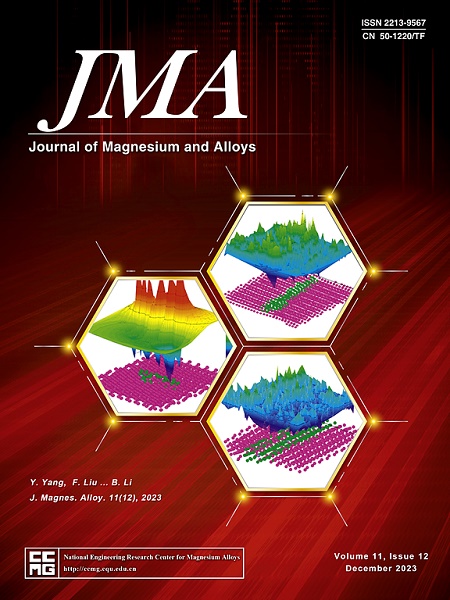可解释的机器学习实现了硼氢化镁储氢系统的高性能
IF 13.8
1区 材料科学
Q1 METALLURGY & METALLURGICAL ENGINEERING
引用次数: 0
摘要
为了解决Mg(BH4)2的缓慢动力学问题,本研究首次提出了一种新的机器学习模型来预测改性Mg(BH4)2的脱氢行为。值得注意的是,从温度编程,等温和循环脱氢行为中收集了大量数据点,使用多头注意机制提出了一个神经网络模型,与传统的机器学习模型相比,该模型具有最高的预测性能。本研究还对影响脱氢过程的不同变量进行了排序,采用可解释性分析确定关键变量阈值,为实验参数设计提供指导。该模型还适用于氢化物和催化剂在Mg(BH4)2体系中共掺杂的情况,在预测不同条件下的脱氢曲线方面具有较高的准确性和可扩展性。利用该模型,可以对一系列尚未开发的Mg(BH4)2共掺杂体系进行性能预测,揭示了氟化石墨(FGi)优越的脱氢催化效果。优化的Mg(BH4)2-LiBH4-FGi系统的实际实验验证证实了模型预测的一致性,性能增强归因于实验参数优化。进一步的表征为FGi和LiBH4的协同相互作用提供了机制上的见解。这项工作为推进机器学习在大容量储氢领域的应用铺平了道路。本文章由计算机程序翻译,如有差异,请以英文原文为准。

Interpretable machine learning enables high performance of magnesium borohydride hydrogen storage system
Aiming to provide optimal solutions to the sluggish kinetics of Mg(BH4)2, this study proposes, for the first time, a novel machine learning model to predict dehydrogenation behaviors of modified Mg(BH4)2. Notably, numerous data points are collected from temperature-programmed, isothermal, and cyclic dehydrogenation behaviors, a neural network model is proposed by using multi-head attention mechanisms, which exhibits the highest predictive performance compared to traditional machine learning models. The study also ranks different variables influencing dehydrogenation processes, employing interpretable analysis to identify critical variable thresholds, offering guidance for the experimental parameter design. The model can also be adapted to scenarios involving co-doping of hydrides and catalysts in Mg(BH4)2 system and proved high accuracy and scalability in predicting dehydrogenation curves under diverse conditions. Employing the model, performance predictions for a series of undeveloped Mg(BH4)2 co-doping systems can be made, and superior dehydrogenation catalytic effects of fluorinated graphite (FGi) are uncovered. Real-world experimental validation of the optimal Mg(BH4)2-LiBH4-FGi system confirms consistency with model predictions, and performance enhancement attributes to experimental parameter optimization. Further characterizations provide mechanistic insights into the synergistic interactions of FGi and LiBH4. This work paves the way for advancing utilization of machine learning in the high-capacity hydrogen storage field.
求助全文
通过发布文献求助,成功后即可免费获取论文全文。
去求助
来源期刊

Journal of Magnesium and Alloys
Engineering-Mechanics of Materials
CiteScore
20.20
自引率
14.80%
发文量
52
审稿时长
59 days
期刊介绍:
The Journal of Magnesium and Alloys serves as a global platform for both theoretical and experimental studies in magnesium science and engineering. It welcomes submissions investigating various scientific and engineering factors impacting the metallurgy, processing, microstructure, properties, and applications of magnesium and alloys. The journal covers all aspects of magnesium and alloy research, including raw materials, alloy casting, extrusion and deformation, corrosion and surface treatment, joining and machining, simulation and modeling, microstructure evolution and mechanical properties, new alloy development, magnesium-based composites, bio-materials and energy materials, applications, and recycling.
 求助内容:
求助内容: 应助结果提醒方式:
应助结果提醒方式:


